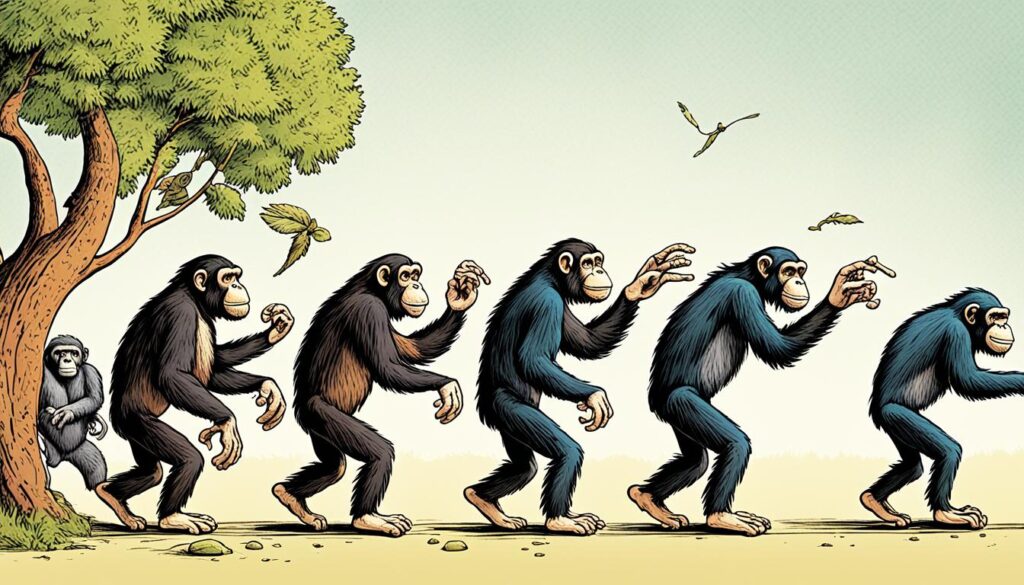

Imagine transforming your business by connecting with your audience on a deeper, more meaningful level. In the heart of Hertfordshire, a unique marketing agency is ready to make that a reality. By harnessing the power of anthropological marketing and storytelling, this team of experts will help your brand break free from the ordinary. They’ll use cultural insights and compelling narratives to create content that not only engages but also drives your audience to take action. Discover how tapping into the essence of human behavior can elevate your marketing strategy and propel your business to new heights.
The anthropology of storytelling in marketing is all about understanding people. It’s about seeing that every purchase is influenced by culture, society, and personal emotions. By using this knowledge, marketers can make content that really speaks to people.
Looking into cultural anthropology in advertising, we see top brands tell immersive stories. These stories take people on journeys and make them feel things deeply. A review by Perrier and Ginis (2018) showed that stories can really change health habits in 70% of cases.
Marketers always look for new ways to connect with people. Using anthropology in marketing helps us understand what drives consumers. It shows us how culture affects what people buy.
Cultural insights are key to good marketing. Knowing the customs and values of our audience lets us make messages they’ll love. Anthropology gives us these insights through research and interviews.
By living in our customers’ shoes, we learn what they really want and need. It’s all about experiencing the world through the lens of our customers.
Effective marketing is not about selling products; it’s about understanding people and creating value in their lives.
Applied anthropology is more than just theory; it helps businesses too. It lets us make marketing that really gets our audience. This way, we offer products that truly fit their lives.
It also helps us understand our own company’s culture. This knowledge lets us make marketing that matches our company’s goals. This builds strong customer relationships.
Anthropology helps us make content that touches our audience deeply. As consumer habits change, anthropology will allow us to adapt thanks to it’s unique insights.
In marketing, knowing what consumers want is key to making effective strategies. By looking at consumer behaviour through an anthropological lens, we learn about cultural differences, what drives buying, and what people need. This helps us make marketing that really speaks to people.
Ethnographic research is a big part of anthropology that helps us understand consumer behaviour. Researchers live with consumers to see what influences their buying habits. They use things like interviews and photos to find out what makes people choose certain products.
Many companies use ethnography in their marketing. Even though it’s a deep dive, marketing teams often have to work fast, usually in a few weeks to months. But, they still spend a lot of time with people to really get what they’re all about.
Ethnography allows us to see the world through the eyes of consumers, unveiling the complex tapestry of cultural meanings and social interactions that shape their behaviour.
Anthropological insights help marketers talk to different groups of people in a way that hits home. They learn what each group likes and how they communicate. This way, they can make messages that really show how products or services can help.
Digital tech has changed how we do ethnographic research. Now, we can use cameras and phones to collect lots of data. This lets us share stories in a way that feels real and engaging, like through videos or photos.
Using anthropological ideas and methods is key to understanding consumer behaviour. It helps marketers get to the heart of what people want and need. This way, brands can connect deeply with people, gain trust, and succeed in a tough market.
Storytelling is critical in marketing. They know how people behave, what they value, and how they communicate. This knowledge lets marketers tell stories that really speak to their audience. The psychology of storytelling shows our brains love stories, making them a strong marketing tool.
To make a brand story that grabs attention, you need to know what your audience cares about. Anthropology helps spot what makes a story hit home. By mixing a brand’s unique qualities, its story, and its mission, marketers craft a tale that teaches and motivates. The best stories touch our feelings, building a bond between the brand and us.
Anthropologists have always looked at mythological archetypes in stories. These include characters like the hero and the wise guide, found in stories everywhere. Using these in marketing lets brands connect with us on a deep level. They can be the hero, the guide, or the change-maker in our lives.
The human brain is naturally attuned to stories through millions of years of evolution, making storytelling engaging at a subconscious level, as per anthropology.
Now, stories can reach us through many channels, thanks to transmedia storytelling campaigns. Brands use different media to tell a single story, making it unforgettable. Anthropology helps make sure these stories hit the mark, sharing the brand’s message clearly.
As marketing gets more complex, storytelling stays vital. By using stories, archetypes, and various media, marketers can grab and keep our attention. This approach builds strong emotional ties with their audience.
Marketers are always looking for new ways to understand their audiences and tell stories that hit home. Using anthropological research in marketing helps us dive deep into what makes consumers tick. Tools like ethnographic research and semiotics are key to this.
Ethnographic research means going into the real world to see how people live and think. It helps us understand what drives their choices. By talking deeply with people and observing them, we learn what truly matters to them.
This approach shows us the real reasons behind their actions. It helps us make our messages clearer and more impactful.
“Ethnographic research provides a rich, holistic understanding of people’s experiences, perspectives, and contexts. It allows us to see the world through their eyes and craft stories that truly resonate with them.” – Autumn D. McDonald, owner of ADM Insights & Strategy
Even though ethnography is powerful, a recent study found only 4.94% of 81 market research jobs in September 2023 wanted anthropologists. This shows there’s a big chance to use anthropological skills in marketing.
Semiotics looks at how signs and symbols communicate. By studying cultural symbols in ads, we can understand what they really represent. This helps us make messages that connect with our audience.
For instance, colours and shapes mean different things in different cultures. Knowing this through semiotics helps us avoid mistakes. It’s crucial in a world where brands reach people from all over.
Using ethnography and semiotics in marketing means working with experts from different fields. By teaming up with anthropologists, we get insights and methods that deepen our understanding of consumers. Schools like Clemson University, Bridgewater State University, and the University of North Texas offer courses that help marketers learn more about culture.
When we aim to make content that speaks to our audience, anthropological research like ethnography and semiotics can change the game. They help us understand the cultural background of our customers. This way, we can tell stories that are real, meaningful, and connect deeply with people.
Marketers are now using AI tools to change how they make content. They use data and AI to tell stories that really speak to their audience. This makes their stories more engaging and meaningful.
Authentic stories blend data and deep insights. By mixing numbers with rich, detailed research, marketers get a full picture of what their audience likes and needs. This helps them understand their audience better.
AI helps make content more personal. It looks at lots of data to find patterns and insights. This lets marketers send messages that really speak to different parts of their audience. It grabs attention and builds a strong bond between the brand and its customers.
Adding expert quotes and customer stories makes stories more real. These real-life examples show how the brand has helped people. It builds trust and makes the brand more relatable.
By mixing expert views and customer stories, brands create a strong sense of trust and connection with their audience.
Marketers need to use both kinds of research to tell great stories. Numbers give basic facts about the audience. But, deep research shows the feelings and reasons behind their choices.
By using both types of research, marketers can find new chances and tell stories that move and inform people. This leads to strong, real connections between brands and their customers in today’s digital world.
Anthropology in marketing is a strong tool for making content that hits the mark with audiences. It uses cultural insights and studies consumer behaviour to make marketing more effective. This leads to better engagement and loyalty to brands.
Storytelling is key in successful marketing, helping brands connect with people on an emotional level. Anthropology helps marketers understand what people believe and value. This leads to stories that feel real and engaging.
Using anthropology, like ethnographic research and semiotic analysis, gives marketers deep insights into consumers. This helps create stories that stick with people. Brands can reach out across different platforms, making their message unforgettable.
As we look to the future, AI and data will become more important in marketing. They help make content that feels real and personal. By mixing different research methods and using expert opinions and customer feedback, marketers can make their stories more believable.
Using anthropology in marketing means really getting what different cultures are about. It’s about making content that truly speaks to the audience. This approach requires a deep understanding of cultural details and a focus on creating meaningful connections.
Anthropology gives marketers deep insights into human behaviour and cultures. By using anthropological research, marketers can understand their audiences better. This helps create content that truly connects with people.
This approach leads to more engaging brand stories. These stories match the values and desires of specific customers.
Applied anthropology uses research to solve real-world problems in businesses. It helps marketers understand what drives consumer choices. By knowing this, businesses can make products that meet customer needs.
Applied anthropologists also help marketers grasp the cultural aspects of their audience. This leads to offerings that truly inspire and desire.
Knowing what each audience likes and needs is key to effective marketing. Research shows that different groups have different preferences. Tailored messages can make a big difference in customer satisfaction.
This targeted approach helps marketers sell their products more effectively.
Anthropologists are experts in human behaviour and culture. They tell stories that are real and meaningful. Their work helps create stories that connect with people on a deep level.
They focus on the cultural aspects that shape our actions. This makes stories more relatable and impactful.
Mythological archetypes add depth to marketing stories. They use universal themes that touch people emotionally. This makes brand stories more memorable and impactful.
Archetypes simplify complex ideas, making them easier to understand and remember. This strengthens the connection with the audience.
Ethnographic research involves observing people in their daily lives. It helps marketers understand what their audience values and needs. This approach provides rich insights into consumer behaviour.
By studying people closely, marketers can develop strategies that truly resonate. This leads to more effective marketing and compelling stories.
AI changes how marketers create content, making it more personal. But the best AI content goes beyond just personalisation. It uses data and stories to connect with people on a deeper level.
By blending data with human insights, marketers can create content that feels real and relatable. This builds strong connections with the audience.